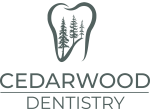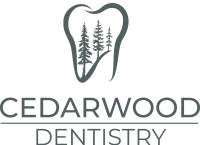 Doxycycline for Acne: Tips and Expectations
Doxycycline for Acne: Tips and Expectations
How Doxycycline Works Against Acne Bacteria
When you start doxycycline, it acts on Cutibacterium acnes and diminishes inflammation by inhibiting bacterial protein production. This reduces colony expansion and lowers immune-triggered swelling.
Beyond killing bacteria, it modulates the immune response, decreasing cytokines and neutrophil activity so lesions heal with less redness and pain.
Expect gradual change: bacterial burden falls first, then visible improvement follows as sebum plugs and inflamed nodules resolve over weeks.
Pairing treatment with gentle skincare accelerates gains and minimizes irritation; discuss dosing and duration with your clinician to balance benefits and resistance risk.
| Effect | Typical timing |
|---|---|
| Bacterial reduction | 2 to 6 weeks |
| Inflammation reduction | 4 to 12 weeks |
| Photosensitivity | Increased sunburn risk; use sunscreen |
| Consultation | Talk to your doctor |
Expected Timeline When Improvements Typically Appear

When you start doxycycline, early changes are usually subtle: inflammation cools and painful nodules soften within the first two weeks. Many people notice fewer new pimples by week four, though existing lesions can take longer to flatten.
Significant improvement often becomes evident around six to eight weeks, with clearer skin and reduced oiliness for responders. Dermatologists typically reassess therapy at three months to decide whether to continue, adjust dose, or add topical treatments.
Patience matters—full benefits may unfold over three to six months, and stopping early risks relapse. If progress stalls or side effects occur, consult your clinician to explore alternatives or combination strategies. Keep sunscreen and probiotics in mind to support your treatment safely.
Common Side Effects and How to Manage Them
Starting doxycycline can feel like a hopeful step, but you may notice mild digestive upset or nausea at first. Taking the pill with a small meal (not dairy-heavy) and water often eases stomach discomfort.
Sun sensitivity is common; protect skin with sunscreen, hats, and avoid peak sun hours. If a rash or severe burning occurs, stop the drug and contact your clinician.
Oral thrush and yeast infections may develop; a probiotic, topical antifungal, or antifungal course usually resolves this. Report persistent white patches or unusual vaginal discharge.
Rarely, serious issues like severe diarrhea, vision changes, or allergic reactions need urgent care. Keep a list of symptoms to monitor and maintain regular follow-up while on therapy.
Drug Interactions and Contraindications to Watch for

Starting doxycycline felt like a small gamble, but knowledge eases worry: avoid concurrent antacids or calcium supplements, as they block absorption, and always disclose all medications to your prescriber promptly.
Some drugs increase sun sensitivity; photosensitivity risks rise with retinoids and certain diuretics, so protect skin and time doses. Hormonal contraceptives are safer, but discuss alternatives with your clinician carefully.
Contraindications include pregnancy and young children because doxycycline risks bone and tooth development; severe liver disease also rules it out. If unsure, consult your healthcare provider before continuing the treatment.
Lifestyle Tips to Boost Doxycycline Effectiveness Safely
Think of your skin as a team — while doxycycline tackles harmful bacteria, you can support the process with simple daily routines. Take antibiotics with a full glass of water and avoid lying down for thirty minutes to reduce irritation. Eat light, calcium-poor meals around dosing times to improve absorption, and use gentle, non-comedogenic cleansers to let treatment work without adding inflammation.
Protect your skin from sun exposure—doxycycline increases photosensitivity—by applying broad-spectrum SPF, wearing hats, and scheduling outdoor time wisely. Stay hydrated, limit alcohol which can worsen side effects, and keep follow-up appointments to monitor response. If irritation or yeast infections emerge, contact your clinician early so adjustments or probiotics can be considered as needed.
| Tip | Purpose |
|---|---|
| Take with water | Reduce GI irritation |
| Use SPF daily | Prevent sunburn/photosensitivity |
Long-term Use, Resistance Risks, and Alternative Options
After months on doxycycline you may notice steady clearing, but prolonged antibiotic use requires careful planning. Dermatologists often limit continuous courses to reduce resistance and side effects; intermittent maintenance or step-down to topical retinoids and benzoyl peroxide can preserve gains. Regular follow-up helps tailor duration, monitor liver function if needed, and detect early signs of bacterial tolerance. Communicating goals with your clinician keeps treatment safe and purposeful and realistic expectations.
If resistance emerges or side effects limit therapy, several alternatives exist: topical antibiotics combined with benzoyl peroxide reduce resistance risk; hormonal treatments like combined oral contraceptives or spironolactone benefit hormonally driven acne in suitable patients; isotretinoin remains the only curative option for severe, scarring acne but requires monitoring. Lifestyle measures—sun protection, non-comedogenic skincare, and diet adjustments—complement medical choices and can lower reliance on long-term systemic antibiotics when prescribed and monitored.


